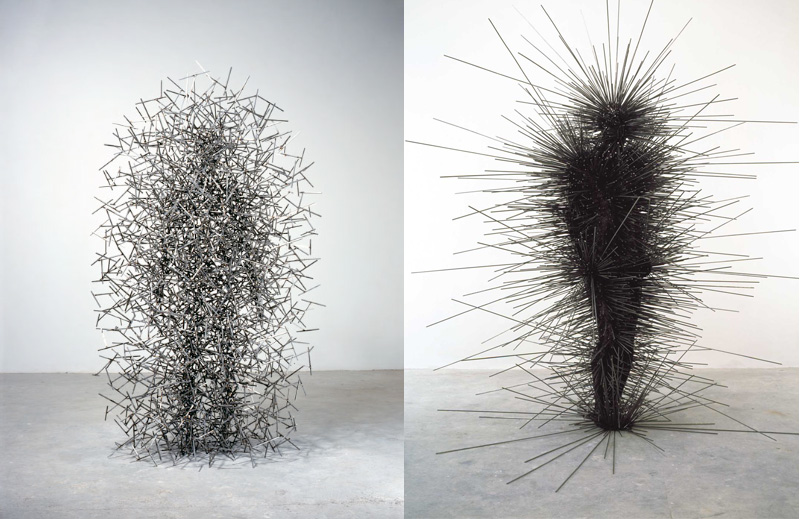Since the late 1970’s Anthony Gormley has used his own body to conduct a remarkable enquiry into the metaphysics of human presence.In so doing he has become one of the exemplars of a new figuration which has revived the relevance of the body in contemporary art.
I have taken the opportunity to visit his studio in London, as a first port of call in my Churchill Memorial Fellowship.
My research will investigate the uses of the figure in late Gothic and Renaissance German sculpture linking to its outstanding practitioners in our contemporary world, including, Gormley, Tony Cragg, Hans Josephsohn, and Jaume Plemsa. These are but some names, among many, who I will seek to document along my pilgrimage through ‘old’ and ‘new’ Europe and the US.
Back to the Gormley studio. “The tyranny of distance”, implicit for so many Australian practitioners,can make the scope and scale of work international artists, such as Gormley, have produced appear mystifying, until one grasps the dynamic nature of cultural exchange cities, such as London, achieve.
A studio visit then is a mind expanding opportunity. Upon entry, it is soon apparent that this architecturally designed compound is in fact a factory, comprising many studios, all dedicated to the highest possible realisation of the artists vision.
Gormley’s work has until recently, begun from castings of his own body in pre-determined postures. These body casts became the containers of an ever-changing panorama of ideas about the field and range of possibilities a human might inhabit.
The studios acquisition and use of a 3D scanner, now makes it possible to by- pass that formerly exhaustive casting process, which saw the artist trapped for hours inside a plaster cocoon. The computer-aided mapping of the artists body is also enabling its re-interpretation in new and increasingly complex geometrical formats. The reimagined body.
It is fascinating and a little mind boggling to follow the extrapolation of Gormleys singular vision harnessed to the seemingly infinite possibilities of modern manufacture.
Stainless and Corten steels, cut and assembled with laser precision, have replaced the lead jackets used in the earliest work.
Ever experimenting however, new works are now being cast in lead, which is in itself, a re-examination of older industrial technology. 3D printing also allows the body to be produced as a model in plastics and polystyrene ready for sand casting into hard metal.
The specialisation of the studios’ many manufacturing processes is motivated by Gormleys insistence that; Cleanliness, is, next to Godliness! I infer here that the God he refers to is no more or less than clear and expansive thinking. The Gormley studio is a rational, well ordered place, where thought is indeed expanded into innovative tangible form, lazy thinking and practice is unacceptable.
